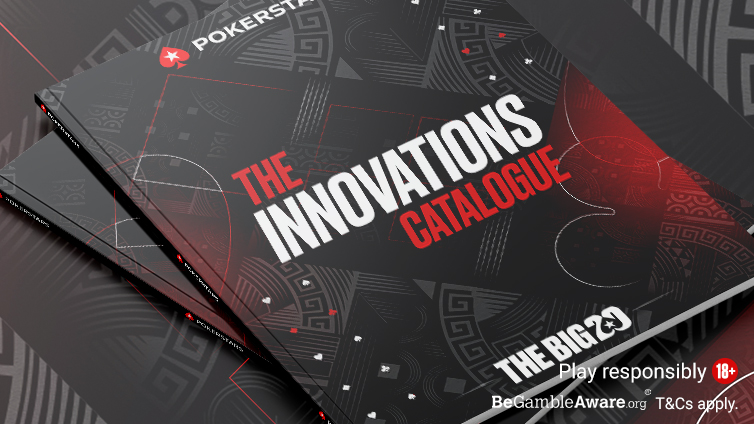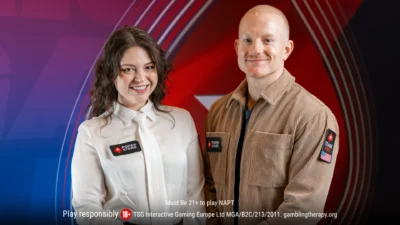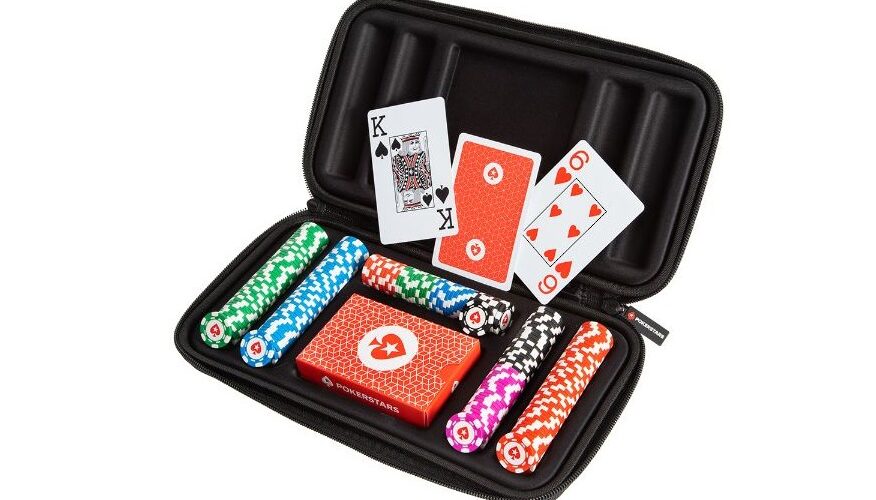PokerStars is celebrating its 20th Anniversary: 20 years as the best known and most trusted online poker site. Here at PokerStars Blog, we are looking back year-by-year on those two decades, noting the landmarks and remembering all the remarkable moments, fitting them into the wider landscape of poker’s sensational development.
Today we look back at 2012, the year Zoom was first released. One of the most successful innovations in online poker, Zoom ramped up the action and cut out the waiting. It has been a permanent fixture in the PokerStars lobby ever since.
Over the years, PokerStars has released a number of new poker variations – some successful, some no longer with us. This article takes a look back at poker’s best and worst innovations.
From turbo to timed
With automatic shuffling and dealing, online poker already offered players the opportunity to play more hands per minute than live games. In other words, it was already faster.
Turbo tournaments didn’t change anything fundamental about the game. They simply sped up the blinds to force the action. Players gravitated towards turbo games and PokerStars continued to add SNGs and MTTs to the schedule, including the much-loved Turbo Takedown in 2008, and the first Turbo Championship of Online Poker (TCOOP) in 2012.
A natural outgrowth of the fast-paced direction that online poker was already heading, Timed Tourneys came on the scene in October 2011. The premise is simple enough. After a given time – anywhere from 15 minutes to three hours – the prize pool is split between the remaining players based on chip counts. For the first time, players had total control over how long they played for.
In the following years, dozens of Timed Tourneys populated the lobby. You’ll still find a few Timed Tourneys per day on PokerStars, so if you want to experience the format for yourself search “Time”.
ZOOM!
The concept of fast and furious poker reached its pinnacle with Zoom. In Zoom, players are instantly transported to another table as soon as they fold. There’s no waiting around in Zoom.
When Zoom made its debut in beta, the opening two microstakes cash games hit their 1,500 player caps within minutes. By May, Zoom was made official and cash game players could enjoy stakes up to $2.50/$5.00 (now increased to $10/$20 max). The following year, the first Zoom tournament was ceremoniously rolled out at MicroMillions IV.
Zoom is now a regular part and parcel of the PokerStars selection. It has its own tab on the lobby for cash games, and a daily schedule of MTTs. Zoom is here to stay!
PokerStars Home Games
In 2011, PokerStars unveiled one of its biggest poker innovations in years, and perhaps one of the most endearing of all time; Home Games.

Home Games were first introduced in 2011
Home Games allow players to invite their friends and poker community to a “club”. From there, they can set up private cash games and tournaments, freeroll or real money. PokerStars were the first to make it possible, and the concept proved an immediate success.
Since its inception, PokerStars have made a number of improvements to Home Games, most recently with a series of updates made in 2020 following a massive surge in popularity (when more than 300,000 home games were setup in a matter of months). Based on feedback, these updates included the addition of new formats, more flexible structures, and a new look. Late registration was also added.
On Home Games, players can setup cash games, tourneys, and even KOs. And since the updates, they are also available on Mobile.
Poker goes mobile
With many players now logging on to PokerStars via a tablet or mobile device, it’s difficult to think of a time when poker wasn’t mobile. Yet the original PokerStars Mobile app was first released in 2012, over a decade after PokerStars started dealing to desktop.
By 2013, a range of features had been added to the app, including PokerStars TV, PS Clock, an EPT Guide, and the ability to watch live events as they happened. For their continued innovation in the mobile gaming sphere, PokerStars won multiple awards for Best Mobile Gaming Operator.
The PokerStars Mobile app is available on iPhone, iPad and Android devices, and offers the same features available on the Desktop version.
Spin N Gos make millionaires
In October 2014, PokerStars added Spin N Gos to their offerings. This innovative new format combined a 3-handed SNG with a slot-like element. At the start of the game a wheel spins to reveal the prize money on offer, which can be anything from 2x to 10,000x the buy-in.

Spin N Gos proved a popular format
To add even more excitement, million dollar editions of these Spin N Gos regularly popped up in the lobby (and still do today). The first Spin N Go millionaire was made in January 2015, when Russia “sss66666” span up $5 to $1 million. During the Spin N Go Anniversary in October 2015, six millionaires were made in a week.
The Spin N Go has always proven popular and is one of the most successful innovations in online poker, so much so that several variations have been added, including Omaha Spin N Gos, Spin N Go Flash, and Spin N Go Max. In Spin N Go Max, random elements are ramped up. There’s a random number of players, three random prizes that the winner picks from blind at the end, and an all-in mode activated after a certain number of hands.
Power Up
Ahhh… remember this one? Power Up came out in October 2017, and it had the potential to really shake things up. The innovation was a kind of fusion of poker and esports (think Hearthstone), an attempt to turn Hold’em into a video game, complete with Avatars and nine different powers that could vastly influence the outcome of a hand.
Players could compete in this poker esport for real money, from $1 to $15 stakes. Power Up was a lot of fun. A lot of work went into its creation. But perhaps it added too much complexity to an already complex game? Players took part and the game continued for two years but, in the end, Power Up powered down.
MORE FROM THE BIG 20 CELEBRATIONS:
VOTE IN THE BIG 20 PLAYER AWARDS | TOURNAMENT SCHEDULE
ALL BLOG REPORTS | DOWNLOAD AND PLAY!
Run of cash game innovations
In 2018, PokerStars experimented with a number of cash game innovations, each of which ran for a trial period, and most of which never came back…
Split Hold’em – This cash game played similar to typical NLHE formats, apart from two flops are dealt. The pot is split between the winner of each pot, so that to scoop the lot players have to win on both boards in the hand. Split Hold’em was the first cash game innovation of 2018, and ran for 55 days from March until May.
Unfold poker – In Unfold Poker, each player paid an ante at the start of the hand. The sum of the antes made up the unfold side pot. Players could unfold their hand on the flop for the cost of the unfold pot and compete for just the side pot. Players who hadn’t yet folded go on to compete for the main pot. Aimed to appeal to amateur players who get frustrated when they hit the flop, Unfold ran for 57 days.

Showtime ran for 62 days before being discontinued
Showtime – In Showtime, when opponents folded, either pre-flop or post-flop, folded cards become face-up for all to see. This allowed players to see if others were holding their outs, and also to see what and when opponents fold. It’s a more information dense version of the game. Showtime lasted 62 days before it was discontinued.
Fusion – A mix of Pot-limit Omaha and Hold’em, Fusion was the final cash game innovation to debut in 2018. Players are dealt two cards, then see the flop, are dealt a third card face down, see the turn, then get a fourth card face down, then its to the river for a final round of betting. Players make the best five card hand using exactly two hole cards. Fusion ran for 64 days before stopping its trial in January 2019. It was the first of these cash game innovations to return, and did so briefly in 2020.
Two new cash game innovations stick
In its continued quest to improve upon cash game offerings, PokerStars came up with several more innovations in 2019, releasing 6+ Hold’em, Tempest and Deepwater.
6+Hold’em is a short decked version of poker in which cards below 6 are removed from the deck. Already being talked about among in-the-know pros on the live circuit, 6+Hold’em was given an online home in January 2019 and remains a part of the offerings to this day.
Tempest and Deepwater were released together in November 2019. Both were six-max cash games with an extra Giant Blind paid by the under-the-gun player and antes that increase whenever showdown isn’t reached. Tempest was a short-stack all-in or fold version, and Deepwater was a deepstack version.
Despite initially showing promise, Deepwater was discontinued after seven weeks. Tempest remains.
Poker goes virtual
In a huge leap for poker, PokerStars VR was unveiled in September 2018 and launched later that year. VR poker is free, immersive and social. You can throw objects at people, chat and share drinks. You can even stream sports. With voice commands and intuitive controls, it’s pretty simple to play poker in VR.
VR poker was never meant to replace online poker, and never will (imagine multi-tabling!). But it has stood the test of time, and improvements are continually made, including the introduction of new themes, SNGs and leaderboards. PokerStars VR requires an Oculus or HRC Vive headset.
Grand Tour / KickOff
PKO tourneys had been gaining popularity for years, as had PKOs. Then along came Grand Tour (now redesigned and rebranded KickOff) to combine the two and bring its own twist to the tables.

Grand Tour was recently rebranded Neymar Jr. Kickoff
In Grand Tour, players can buy-in at any level, from $1 to $25, and must increase their bounty by knocking out players and making it through shoutout style 4-max SNGs. Bounties increase as the game progresses, and when the player wins the shootout that brings their own bounty passed $50 they cash out their own.
It’s a fun format that appeals to players of all buy-in levels, and has an arcade-like feel with leaderboards and the opportunity to randomly win huge bounty multipliers. As one of the latest poker innovations in the catalogue, KickOff succeeds at combining many of the factors that have made past innovations succeed.
MORE IN THIS SERIES:
2011 – Isuldur1 and the nosebleed cash games
2010 – Poker as a TV and streaming spectacle
2009 – The live poker boom hits its highest point
2008 – Where future superstars cut their teeth
2007 – The changing face of the sponsored pro
2006 – How poker prize pools ballooned
2005 – Reporting on poker will never catch on…
2004 – The Year of the EPT
2003 – Chris Moneymaker wins WSOP, sparks ‘poker boom’
2002 – The year of WCOOP
2001 – Electronic poker before PokerStars

View Other Blogs



















